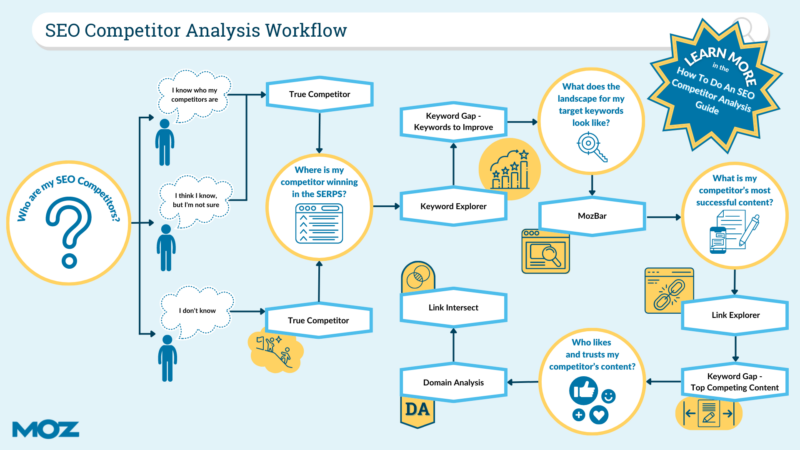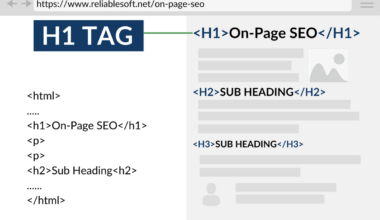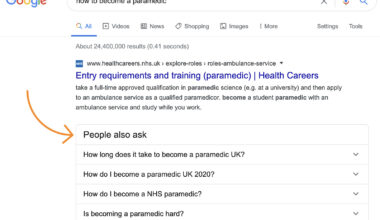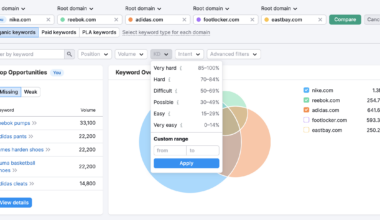Introduction to SEO Competitor Analysis
As a business or website owner, one of the most important goals is to rank higher on search engine results pages (SERPs) than your competitors. To achieve this, you need to understand how your competitors are ranking higher and what strategies they are using to achieve their success. This is where SEO competitor analysis comes in handy.
SEO competitor analysis is the process of analyzing and understanding your competitors’ SEO strategies, including their keywords, backlinks, and on-page optimization. By doing so, you can identify areas where your own SEO strategy is lacking and areas where you can improve.
Competitor analysis involves gathering data on your competitors’ online presence, including their website content, social media presence, and online marketing strategies. The goal is to gain insight into their SEO tactics and use that information to improve your own strategy.
To conduct a successful SEO competitor analysis, you need to identify your competitors, analyze their keywords and backlinks, and leverage the information to improve your on-page optimization. It is also important to continuously monitor and update your competitor analysis to ensure that you are always up-to-date with the latest trends and strategies.
In the following sections, we will dive deeper into these tactics and explore how you can use them to improve your SEO strategy and outrank your competitors.
Identifying Competitors for Analysis
Before you can analyze your competitors’ SEO strategies, you need to identify who your competitors are. Your competitors are the websites that are ranking for the same keywords as you and are competing for the same target audience.
To identify your competitors, you can start by conducting a simple Google search for the keywords you are targeting. Take note of the websites that appear on the first page of the search results. These are the websites that you will be competing against.
Another way to identify your competitors is by using online tools such as SEMrush or Ahrefs. These tools allow you to enter your website URL and analyze your competitors’ websites. They provide you with a list of websites that are ranking for the same keywords as you and can give you insights into their SEO strategies.
Once you have identified your competitors, it is important to analyze their websites thoroughly. Look at their website content, social media profiles, and online marketing strategies. Take note of the keywords they are targeting and the backlinks they have acquired.
Creating a spreadsheet or table to keep track of your competitors’ information can be helpful. This allows you to easily compare their strategies to your own and identify areas where you can improve.
Remember, your competitors may change over time as their SEO strategies change. It is important to continuously monitor and update your list of competitors to ensure that you are always analyzing the right websites.
By identifying your competitors and analyzing their SEO strategies, you can gain valuable insights into how to improve your own SEO strategy and outrank your competition.
Analyzing Competitors’ Keywords and Backlinks
Analyzing your competitors’ keywords and backlinks is a crucial component of SEO competitor analysis. By understanding the keywords your competitors are targeting and the backlinks they have acquired, you can gain valuable insights into how to improve your own SEO strategy.
To analyze your competitors’ keywords, you can use online tools such as SEMrush or Ahrefs. These tools allow you to enter your competitor’s website URL and see the keywords they are ranking for. You can also see the search volume and competition level for each keyword.
Once you have identified your competitors’ keywords, you can use this information to optimize your own website content. Look for opportunities to create content around similar topics and keywords. You can also use this information to identify gaps in your own keyword targeting and adjust your strategy accordingly.
Analyzing your competitors’ backlinks is also important. Backlinks are links from other websites that point to your competitor’s website. Backlinks are an important ranking factor for search engines, as they indicate that other websites consider your competitor’s content to be valuable and relevant.
To analyze your competitors’ backlinks, you can use online tools such as Ahrefs or Majestic. These tools allow you to enter your competitor’s website URL and see the backlinks they have acquired. You can also see the domain authority and page authority of the websites linking to your competitor’s website.
Once you have identified your competitors’ backlinks, you can use this information to improve your own link building strategy. Look for opportunities to acquire backlinks from similar websites or to create content that is valuable enough to attract backlinks naturally.
It is important to note that not all backlinks are created equal. Some backlinks are more valuable than others, depending on the domain authority and page authority of the linking website. Focus on acquiring high-quality backlinks from reputable websites to improve your SEO strategy.
In conclusion, analyzing your competitors’ keywords and backlinks is a crucial component of SEO competitor analysis. By understanding the keywords your competitors are targeting and the backlinks they have acquired, you can gain valuable insights into how to improve your own SEO strategy and outrank your competition. Use online tools to conduct your analysis and adjust your strategy accordingly.
Leveraging Competitor Analysis for On-Page Optimization
On-page optimization is the process of optimizing individual pages on your website to improve their search engine ranking. By leveraging your competitor analysis, you can identify areas where you can improve your on-page optimization and outrank your competitors.
One of the first things you should do is analyze your competitors’ website content. Look for topics and keywords that they are targeting and see how they are incorporating them into their content. This can provide valuable insights into how to optimize your own website content.
You can use online tools such as SEMrush or Google Keyword Planner to identify relevant keywords for your industry. Once you have a list of keywords, incorporate them into your website content in a natural and organic way. Be sure to include keywords in your page titles, headings, and meta descriptions.
Another important aspect of on-page optimization is website structure. Take a look at how your competitors have structured their website and see if there are any opportunities for improvement. Look at their navigation menu, internal linking structure, and URL structure.
Ensure that your website is easy to navigate and that your pages are linked together in a logical manner. Use descriptive and keyword-rich URLs to make it clear what each page is about.
Finally, pay attention to your website’s loading speed. Slow loading times can negatively impact your search engine ranking and user experience. Use online tools such as Google PageSpeed Insights to analyze your website’s loading speed and identify areas for improvement.
By leveraging your competitor analysis for on-page optimization, you can improve your website’s search engine ranking and outrank your competition. Be sure to continuously monitor and update your on-page optimization strategy to ensure that you are always up-to-date with the latest trends and strategies.
In conclusion, on-page optimization is a key component of SEO competitor analysis. By analyzing your competitors’ website content, structure, and loading speed, you can identify areas where you can improve your own website and outrank your competition. Use online tools to conduct your analysis and adjust your strategy accordingly.
Final Thought: Continuous Monitoring and Updating of Competitor Analysis
Competitor analysis is not a one-time task; it is an ongoing process. It is important to continuously monitor and update your competitor analysis to ensure that you are always up-to-date with the latest trends and strategies.
Your competitors’ SEO strategies may change over time. They may start targeting new keywords, acquiring new backlinks, or implementing new on-page optimization techniques. By continuously monitoring and updating your competitor analysis, you can stay on top of these changes and adjust your own strategy accordingly.
One way to do this is by setting up alerts for your competitors’ website changes. You can use tools like Visualping or Distill Web Monitor to track changes to your competitors’ website content, keywords, and backlinks. This allows you to stay up-to-date with their strategies and adjust your own strategy accordingly.
Another way to continuously monitor your competitors’ SEO strategies is by regularly conducting keyword research and backlink analysis. By doing this, you can identify new opportunities for optimization and stay ahead of the competition.
Lastly, don’t forget to regularly update your own website content and SEO strategy. By continuously improving your own website and staying up-to-date with the latest trends and strategies, you can outrank your competitors and improve your search engine ranking.
In conclusion, continuous monitoring and updating of your competitor analysis is crucial for staying ahead of the competition. Use online tools to track changes to your competitors’ websites, regularly conduct keyword and backlink analysis, and continuously update your own website and SEO strategy. By doing so, you can improve your search engine ranking and outrank your competition.






















